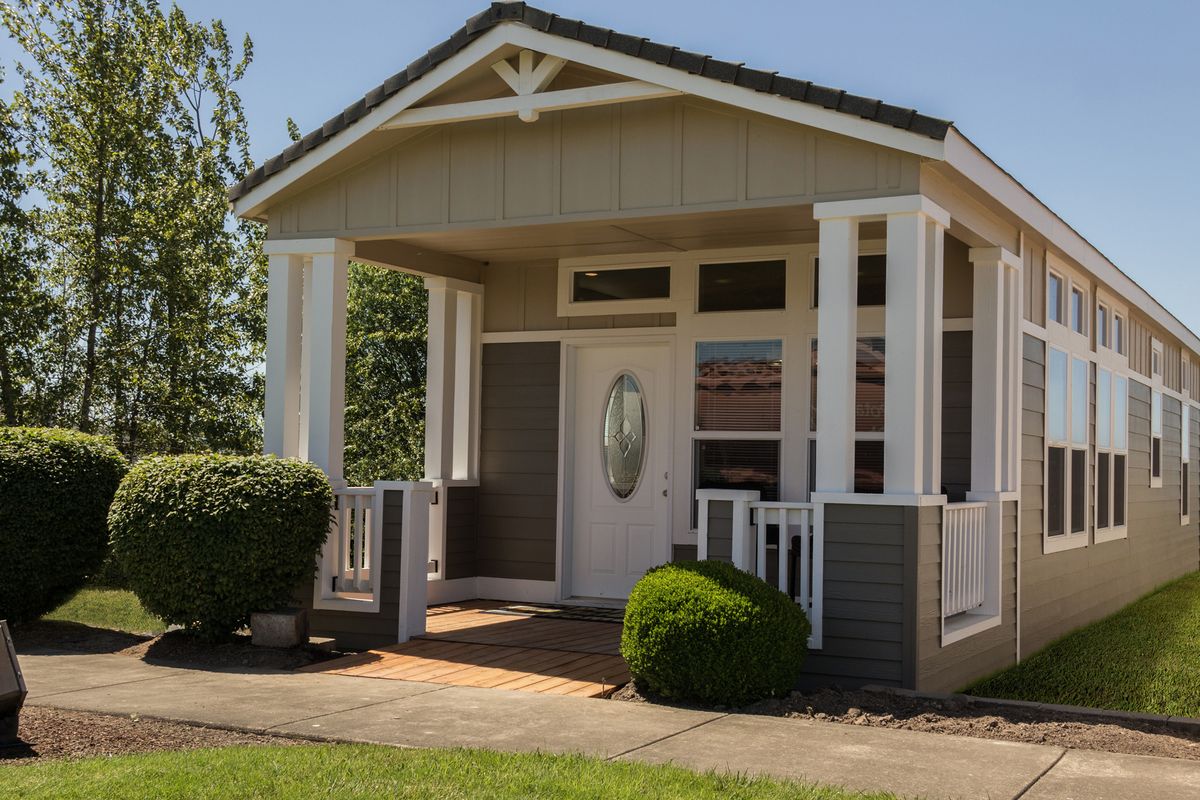Community Frameworks seeks location for its first model elder cottage

Mark Wilson is in search of an Inland Northwest family willing to place the area’s first elder cottage in the family’s backyard.
The family won’t get a monetary break for being the first, but they will pioneer a trend in senior housing that is predicted to flourish in the next decade or so.
“An elder cottage is a small, energy-efficient, self-contained home designed to be placed adjacent to an existing home that would allow an elder to live there under the loving care of an adult child – or a friend – in the primary residence,” Wilson said.
Wilson is housing developer for Community Frameworks, an affordable housing nonprofit in Spokane. He’s excited about the elder cottage initiative because “they were doing this 100 years ago. I always like when proven ideas come back.”
Back to the future
In 1947, more than 25 percent of U.S. homes housed at least three generations of the same family, according to AsYouAge.com, a resource website for boomers and seniors.
Though multigenerational living was already on the wane in the families where baby boomers grew up, grandparents were still often taken into the family home after losing mates or being hospitalized.
Families sometimes added or remodeled rooms to give the elders some privacy or built separate dwellings on the same property. These became known as “granny flats.”
By the 1970s, with the rise of suburban living, women working outside the home and the proliferation of retirement living communities, granny flats went out of style; in many communities, zoning laws didn’t even allow them.
By 2000, only 4 percent of elderly parents were living with their families.
Aging experts are betting on a pendulum swing back to more multigenerational living.
Some boomers will want their aging parents in close proximity, but not sharing the house itself, and aging parents, used to independence, won’t want to live in the same home with their grown kids and grandkids, Wilson said.
“The elder gets dignity. They have their own space,” Wilson said. “They don’t have to worry about (being) up at 5:30 in the morning and wondering – ‘Am I going to wake the kids?’ – or having the television up too loud.”
Elder cottages could really boom when boomers hit their 70s, 80s and 90s.
“Boomers are taking more responsibility and being proactive,” Wilson said. “I could see this type of concept being used to create senior villages, for lack of a better term. I can see a group of old friends or like-minded people who want to grow old together create clusters of these homes and have a wonderful lifestyle through communal sharing of meals and gardens and fellowship.”
No one yet knows the creative ways older boomers will live in their old age, but when Wilson saw his first elder cottage about a year ago during a tour of a manufactured home company, he thought: “This is as exciting as anything I’ve seen yet.”
Cottage life
Palm Harbor Homes builds elder cottages that range in size from 400 to 600 square feet at its factory in Millersburg, Ore. Units can be custom-built slightly larger and with added features.
Though studio units are available, most of the cottages are constructed with one bedroom, a bathroom, a kitchen plus a living and dining area.
The cottages feature wide doorways and hallways and accessible showers. The utilities connect from the main house.
The units range in price from $43,000 to $50,000.
Elder cottages arrive nearly complete, but it can cost another $10,000 to $15,000 to prepare the site – laying the foundation, creating outdoor steps and walkways and clearing space behind the main family residence.
Zoning shouldn’t be a huge hurdle, Wilson said, because in 2004, Spokane County established zoning rules guiding “detached accessory dwelling” units.
The units are not allowed in every zoning classification. And where allowed, they must be located within 150 feet of the primary residence and cannot be more than 800 square feet on the main floor.
One of the reasons the county allows detached accessory dwelling units?
Its website explains: “(To) provide older residential living assistance in a moderately independent environment.”
The first family
Buying an elder cottage as a model home so interested families can take a look-see is a bit beyond the budget of Community Frameworks, so the nonprofit is hoping one family will buy the first elder cottage and place it in the family’s backyard.
“Ideally, we would use it as a model prior to them placing it in their backyard,” Wilson said.
He is getting the word out about elder cottages by visiting senior centers and other organizations; he’ll make a presentation to any group that asks. On Nov. 13, he’ll be at the Corbin Senior and Activity Center on Spokane’s North Side.
The center’s executive director, Christa Richardson, grew up in Germany where elder family members often live very near younger family members.
“I think that’s the way to go,” Richardson said. “In Germany, many houses have two apartments – one upstairs, one downstairs.”
The elders in her home country often help with cooking, laundry and child care which allows them to feel useful into older age.
“It’s a win-win situation,” Richardson said. “Once you close your door, you are by yourself. You remain independent.”